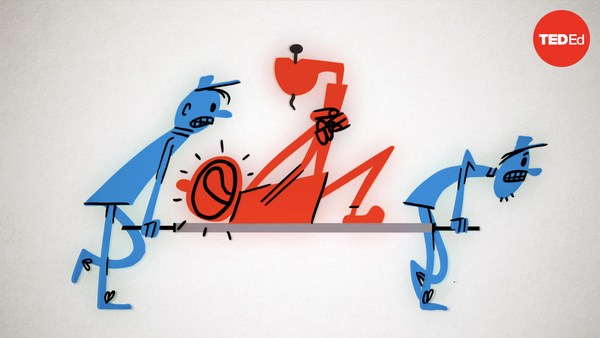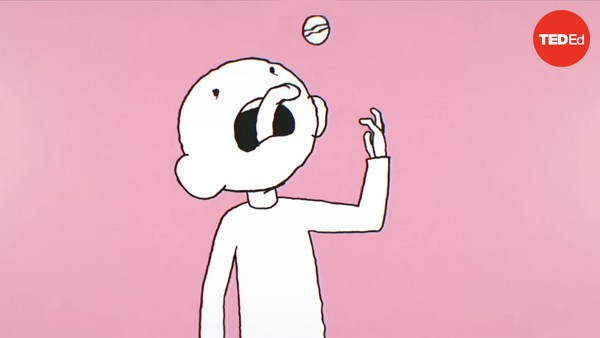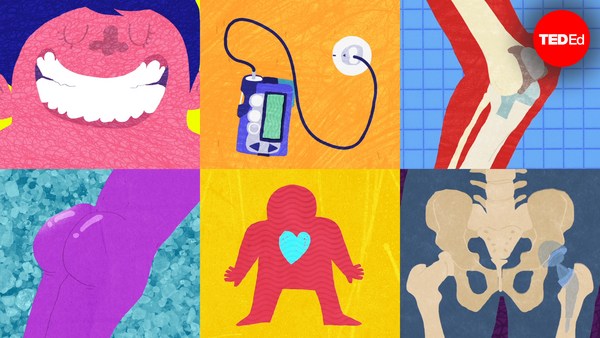In 1996, 56 volunteers took part in a study to test a new painkiller called Trivaricaine. On each subject, one index finger was covered in the new painkiller while the other remained untouched. Then, both were squeezed in painful clamps. The subjects reported that the treated finger hurt less than the untreated one. This shouldn't be surprising, except Trivaricaine wasn't actually a painkiller, just a fake concotion with no pain-easing properties at all. What made the students so sure this dummy drug had worked? The answer lies in the placebo effect, an unexplained phenomenon wherein drugs, treatments, and therapies that aren't supposed to have an effect, and are often fake, miraculously make people feel better. Doctors have used the term placebo since the 1700s when they realized the power of fake drugs to improve people's symptoms. These were administered when proper drugs weren't available, or if someone imagined they were ill. In fact, the word placebo means "I shall please" in Latin, hinting at a history of placating troubled patients. Placebos had to mimic the real treatments in order to be convincing, so they took the form of sugar pills, water-filled injections, and even sham surgeries. Soon, doctors realized that duping people in this way had another use: in clinical trials. By the 1950s, researchers were using placebos as a standard tool to test new treatments. To evaluate a new drug, for instance, half the patients in a trial might receive the real pill. The other half would get a placebo that looked the same. Since patients wouldn't know whether they'd received the real thing or a dud, the results wouldn't be biased, researchers believed. Then, if the new drug showed a significant benefit compared to the placebo, it was proved effective. Nowadays, it's less common to use placebos this way because of ethical concerns. If it's possible to compare a new drug against an older version, or another existing drug, that's preferable to simply giving someone no treatment at all, especially if they have a serious ailment. In these cases, placebos are often used as a control to fine-tune the trial so that the effects of the new versus the old or alternative drug can be precisely compared. But of course, we know the placebos exert their own influence, too. Thanks to the placebo effect, patients have experienced relief from a range of ailments, including heart problems, asthma, and severe pain, even though all they'd received was a fake drug or sham surgery. We're still trying to understand how. Some believe that instead of being real, the placebo effect is merely confused with other factors, like patients trying to please doctors by falsely reporting improvements. On the other hand, researchers think that if a person believes a fake treatment is real, their expectations of recovery actually do trigger physiological factors that improve their symptoms. Placebos seem to be capable of causing measurable change in blood pressure, heart rate, and the release of pain-reducing chemicals, like endorphins. That explains why subjects in pain studies often say placebos ease their discomfort. Placebos may even reduce levels of stress hormones, like adrenaline, which can slow the harmful effects of an ailment. So shouldn't we celebrate the placebo's bizarre benefits? Not necessarily. If somebody believes a fake treatment has cured them, they may miss out on drugs or therapies that are proven to work. Plus, the positive effects may fade over time, and often do. Placebos also cloud clinical results, making scientists even more motivated to discover how they wield such power over us. Despite everything we know about the human body, there are still some strange and enduring mysteries, like the placebo effect. So what other undiscovered marvels might we contain? It's easy to investigate the world around us and forget that one of its most fascinating subjects lies right behind our eyes.
Emma Bryce: The power of the placebo effect

- Chapters
- descriptions off, selected
- captions off, selected
This is a modal window.
In 1996, 56 volunteers took part in a study
to test a new painkiller called Trivaricaine.
On each subject, one index finger was covered in the new painkiller
while the other remained untouched.
Then, both were squeezed in painful clamps.
The subjects reported that the treated finger hurt less than the untreated one.
This shouldn't be surprising,
except Trivaricaine wasn't actually a painkiller,
just a fake concotion with no pain-easing properties at all.
What made the students so sure this dummy drug had worked?
The answer lies in the placebo effect,
an unexplained phenomenon
wherein drugs, treatments, and therapies that aren't supposed to have an effect,
and are often fake,
miraculously make people feel better.
Doctors have used the term placebo since the 1700s
when they realized the power of fake drugs to improve people's symptoms.
These were administered when proper drugs weren't available,
or if someone imagined they were ill.
In fact, the word placebo means "I shall please" in Latin,
hinting at a history of placating troubled patients.
Placebos had to mimic the real treatments in order to be convincing,
so they took the form of sugar pills,
water-filled injections,
and even sham surgeries.
Soon, doctors realized that duping people in this way had another use:
in clinical trials.
By the 1950s, researchers were using placebos as a standard tool
to test new treatments.
To evaluate a new drug, for instance,
half the patients in a trial might receive the real pill.
The other half would get a placebo that looked the same.
Since patients wouldn't know whether they'd received the real thing or a dud,
the results wouldn't be biased,
researchers believed.
Then, if the new drug showed a significant benefit compared to the placebo,
it was proved effective.
Nowadays, it's less common to use placebos this way because of ethical concerns.
If it's possible to compare a new drug against an older version,
or another existing drug,
that's preferable to simply giving someone no treatment at all,
especially if they have a serious ailment.
In these cases, placebos are often used as a control to fine-tune the trial
so that the effects of the new versus the old or alternative drug
can be precisely compared.
But of course, we know the placebos exert their own influence, too.
Thanks to the placebo effect,
patients have experienced relief from a range of ailments,
including heart problems,
asthma,
and severe pain,
even though all they'd received was a fake drug or sham surgery.
We're still trying to understand how.
Some believe that instead of being real,
the placebo effect is merely confused with other factors,
like patients trying to please doctors by falsely reporting improvements.
On the other hand,
researchers think that if a person believes a fake treatment is real,
their expectations of recovery actually do trigger physiological factors
that improve their symptoms.
Placebos seem to be capable of causing measurable change in blood pressure,
heart rate,
and the release of pain-reducing chemicals, like endorphins.
That explains why subjects in pain studies often say placebos ease their discomfort.
Placebos may even reduce levels of stress hormones,
like adrenaline,
which can slow the harmful effects of an ailment.
So shouldn't we celebrate the placebo's bizarre benefits?
Not necessarily.
If somebody believes a fake treatment has cured them,
they may miss out on drugs or therapies that are proven to work.
Plus, the positive effects may fade over time,
and often do.
Placebos also cloud clinical results,
making scientists even more motivated to discover
how they wield such power over us.
Despite everything we know about the human body,
there are still some strange and enduring mysteries,
like the placebo effect.
So what other undiscovered marvels might we contain?
It's easy to investigate the world around us
and forget that one of its most fascinating subjects
lies right behind our eyes.
Dec 18 2019
www.ted.com

